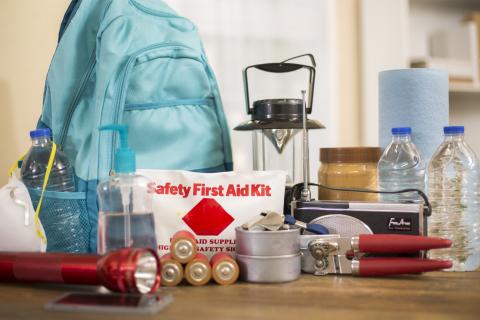Are You Prepared for a Natural Disaster?
And unfortunately, these natural disasters and climate events are on the rise. In 2021, there were 20 extreme weather events in the U.S., triple the number that occurred just 15 years earlier. So it’s more important than ever that older adults make plans ahead of time for what they will do in a natural disaster.
First, evaluate what kind of natural disasters could possibly occur in your area. The Federal Emergency Management Agency (FEMA) has an interactive map called the National Risk Index that identifies risk by county. You can use the map to evaluate the likelihood of a natural disaster in your area. For example, the Midwest has a low risk of coastal flooding, but a high risk for tornados. Alaskans are safe from hurricanes, but not earthquakes. Understanding the risk you could be facing will help you begin your planning.
Some disasters will require an evacuation, while others may require you to stay at home or “shelter in place.” In either scenario, you will need an emergency kit. This emergency kit should have what you need to survive for three to seven days. Some people also make a smaller emergency kit that can be kept in their car or place of work. Your emergency kit should contain:
- Water: Store at least a three-day supply of water, with a general guideline of one gallon per person per day. If possible, opt for bottled water with a long shelf life.
- Nonperishable food: Stock up on nonperishable food items that can be easily consumed without the need for cooking or refrigeration. If you include canned food, remember to also pack a can opener.
- Medications: Keep a sufficient supply of prescription medications in their original containers. Ask your doctor or pharmacist for guidance in procuring emergency kit medicines. Include over-the-counter medications for pain relief, allergies, and common ailments.
- First aid kit: Include a well-stocked first aid kit containing adhesive bandages, antiseptic wipes, gauze pads, adhesive tape, scissors, tweezers, disposable gloves, and any necessary prescription medications or medical supplies.
- Flashlight and batteries: Pack a reliable flashlight with extra batteries. Consider using a flashlight that is easy to handle and has a long-lasting battery life.
- Battery-powered or hand-crank radio: Include a portable radio to stay informed about emergency updates and weather conditions. Be sure to have spare batteries if the radio is battery powered.
- Personal documents: Keep copies of important documents such as identification cards, passports, medical information, insurance policies, and contact information for family members or emergency contacts. Store them in a waterproof container or a sealed plastic bag.
- Personal hygiene items: Include essential hygiene items like toothbrushes, toothpaste, soap, hand sanitizer, wet wipes, and toilet paper.
- Extra clothing and blankets: Pack extra clothing appropriate for the climate, including warm layers and sturdy shoes. Also, include blankets or sleeping bags for added warmth and comfort.
- Cash: Have a small amount of cash on hand, as ATMs and card payment systems may not be functional during emergencies.
Next, make a plan and communicate it clearly to all family members. Consider that you may not all be in the same place when disaster strikes. Think about where you will meet up, and what evacuation routes may be available. And don’t forget your pets!
Finally, make sure you will be notified if a natural disaster is predicted to happen. Download the FEMA mobile app and sign up for wireless emergency alerts so you can be ready to launch your well-developed plan into action. Ready.gov is a great source for tools and tips to compile your emergency kit and craft a family emergency plan. With a well-stocked emergency kit and plan in place, you can rest easy knowing your family is prepared.
